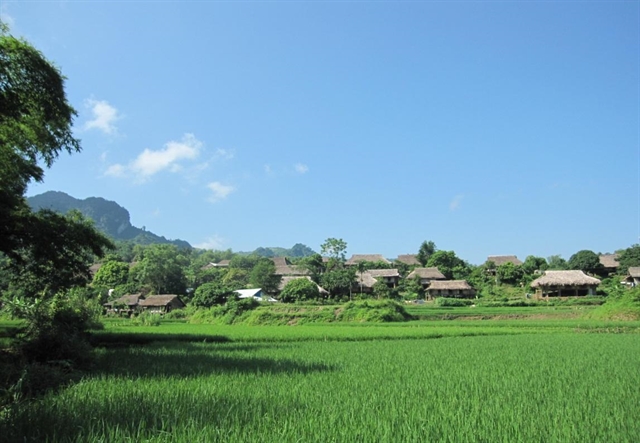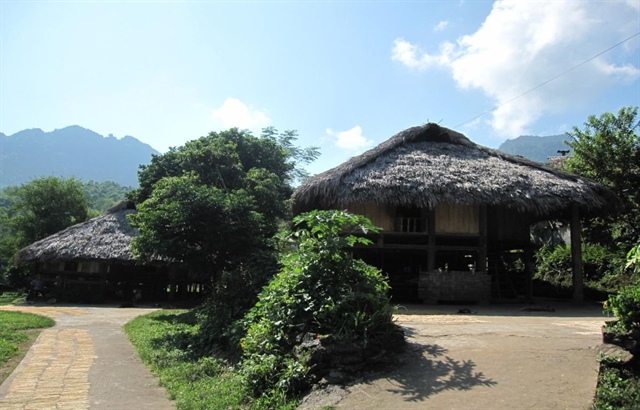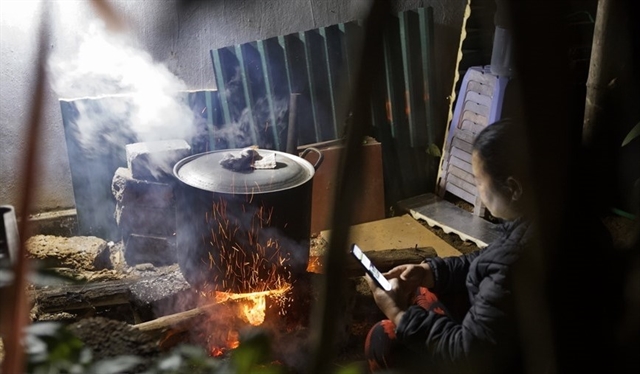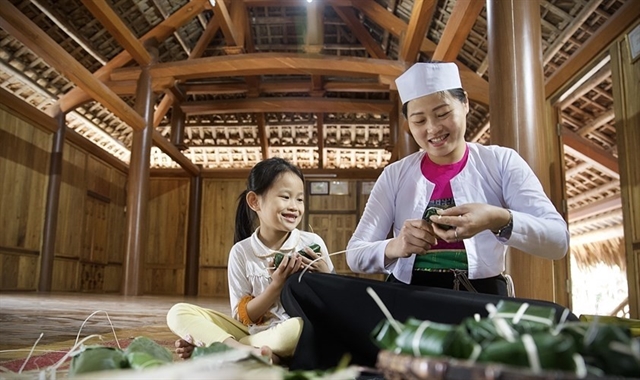Located in Bình Thanh Commune, Cao Phong District of Hòa Bình Province, Giang Mỗ Village is a peaceful village, 10km from Hòa Bình City and nearly 90km from the capital Hà Nội.
Located in Bình Thanh Commune, Cao Phong District of Hòa Bình Province, Giang Mỗ Village is a peaceful village, 10km from Hòa Bình City and nearly 90km from the capital Hà Nội.
The village has a pristine natural landscape and a diverse culture and cuisine, and has been a destination for both domestic and foreign visitors.
“I am impressed with the simple bamboo houses on stilts of the Mường people next to lush rice fields and dense forest,” said visitor Lâm Phúc Khánh from Hà Nội.
“All combine properly to create a romantic painting of the Cao Phong region,” he said.
 |
| Lush green is everywhere in the village. Photo khudulichhoabinh.vn |
There are over 500 residents who live in over 100 old houses-on-stilts.
The village is popular as a place for escaping from stressful urban life.
“When I’m too tired with business tasks, I just come and stay here for two or three days, then I will feel refreshed and ready for boring routines again,” Khánh said.
Khánh and many other visitors have been attracted by the Mường people’s traditional houses on stilts, which often have three storeys. The first floor is for keeping cattle and storing farming tools. The second floor is where all family members stay and sleep while the third one is for storing utensils and food.
 |
| Houses on stilts at the village. Photo khudulichhoabinh.vn |
“Depending on the number of the family members, the size of the house may be bigger or smaller,” Bùi Thị Phong, a local culture official, said.
There are often two staircases. The main staircase is on the right side of the house while the minor one is on the left. The main staircase is for guests and men while the latter is for women. The owners use the minor staircase while cooking and after returning from the field.
The house on stilts is made without walls between rooms. The spaces inside the house are divided conventionally, and are respected in a special way.
For example, in front of the main staircase, there is often a small tank of water for the owners and guests to clean their hands and feet before stepping into the house.
The middle room of the house is for receiving guests, the inner part is for family members.
The area near the window is where they place an altar and for the elders to sit as well as distinguished guests, while the younger people sit in another area.
The kitchen area is an important part of the house, which is considered the soul of the house, where family members prepare food and meet one another.
The kitchen is often kept clean and tidy. Guests can chat and eat with the hosts by the fire.
 |
| The kitchen is the soul of the house. Photo baodantoc.vn |
“Most of the houses lean on the side of mountains or hills, and are high enough to receive natural wind,” Phong said. “Each house has a main door, one or two staircases, a pipe to lead water from the mountain and some other additional facilities.”
Khánh said strolling along local paths to admire the simple houses on stilts is relaxing.
“The scenery is simple and breathtakingly beautiful at the same time,” he said. “You can see lush green everywhere.”
Mai Thanh Giang, a local tourist guide, said locals are very open.
“You can stop by any house and ask for the owners permission to come in to look around,” she said.
“The village has been running a community tourism model, so locals are friendly to guests,” she said.
Giang said there are various festivals such as Khai Hạ Mượng Bi, the opening field and opening forest ceremony on the eighth day of the first lunar month, and the Tiên Pagoda Festival from the beginning of the first lunar month to the end of the third lunar month. The latter wishes for favourable weather all year round and also a way for Mường people to show their gratitude to their ancestors.
Besides planting rice, vegetables and raising cattle, locals also weave embroidered cloths.
Visitors can buy local clothes or things made from local cloth as souvenirs.
Khánh said he likes the food here, including the steamed sticky rice, boiled pork, fried fish, and pork rolls covered with piper lolot.
 |
| Local cuisine is unique. Photo baodantoc.vn |
“All are raised organically by locals so they taste so good,” he said.
Khánh also recommends local wine drunk through straws.
“The wine is fermented with local leaves, so it tastes unique,” he said.
At night, locals entertain visitors with folk singing and dancing.
Giang suggests a trip to Giang Mỗ Village should be combined with a visit to Thung Nai – a lake near the hydroelectric dam in Đà River, which has beautiful landscapes with a big turquoise lake and various mountains emerging from the lake.
